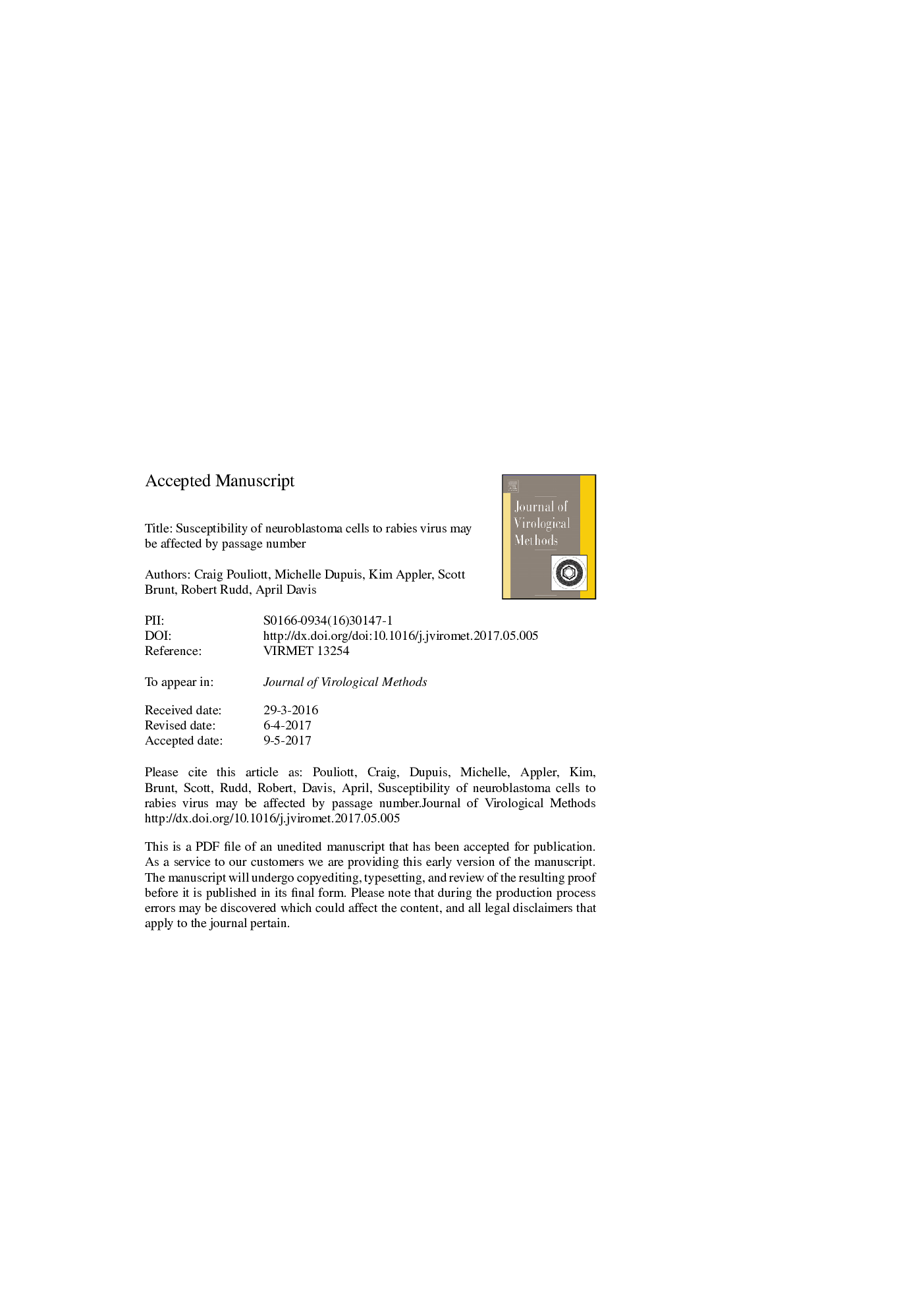| Article ID | Journal | Published Year | Pages | File Type |
|---|---|---|---|---|
| 5673041 | Journal of Virological Methods | 2017 | 13 Pages |
Abstract
Maintaining a healthy, continuous immortalized cell line is essential for rabies laboratories that perform virus isolation assays and test for the presence of viral neutralizing antibodies. Individuals who routinely work with rabies virus, such as rabies laboratory employees, or those who may have a high potential for exposure to rabies virus, including veterinarians, should be tested for the presence of anti-rabies viral neutralizing antibodies (VNA) every 6-24 months, depending on potential exposure level. The gold standard for serum neutralization assays require the use of live rabies virus and cells that are sensitive to rabies virus infection. Additionally, virus isolation assays are routinely performed in rabies laboratories as a back-up for the direct fluorescent antibody test (dFAT). Currently there are no guidelines or publications recommending the use of low, intermediate, or high passage cell lines in rabies assays. In this study, we compared the sensitivity of intermediate, high, and extremely high passaged neuroblastomas to rabies virus using virus isolation, serum neutralization, and real time RT-PCR techniques. Additionally, cells were examined microscopically to determine changes in morphology and dissemination of rabies virus antigen between intermediate, high, and extremely high passage cells. No significant difference was found between cell passage numbers and viral susceptibility between intermediate and high passaged cells. However, extremely high passaged cells (â¥1200 passages) were less susceptible to viral infection and/or produced less virus following inoculation. As a result, rabies laboratories that use viral isolation and serum neutralization assays should regularly assess cell susceptibility to ensure the integrity and repeatability of the test.
Related Topics
Life Sciences
Immunology and Microbiology
Virology
Authors
Craig Pouliott, Michelle Dupuis, Kim Appler, Scott Brunt, Robert Rudd, April Davis,
